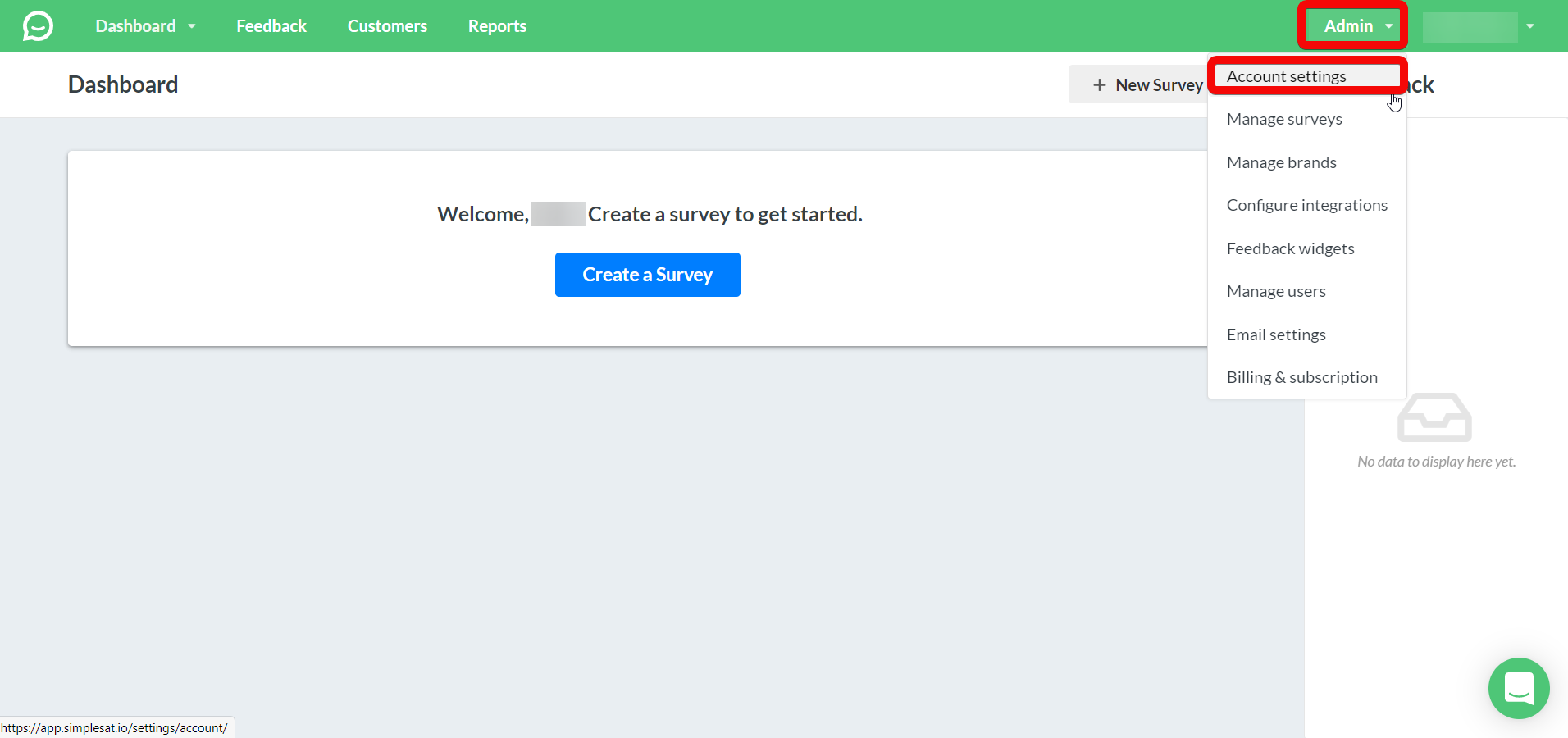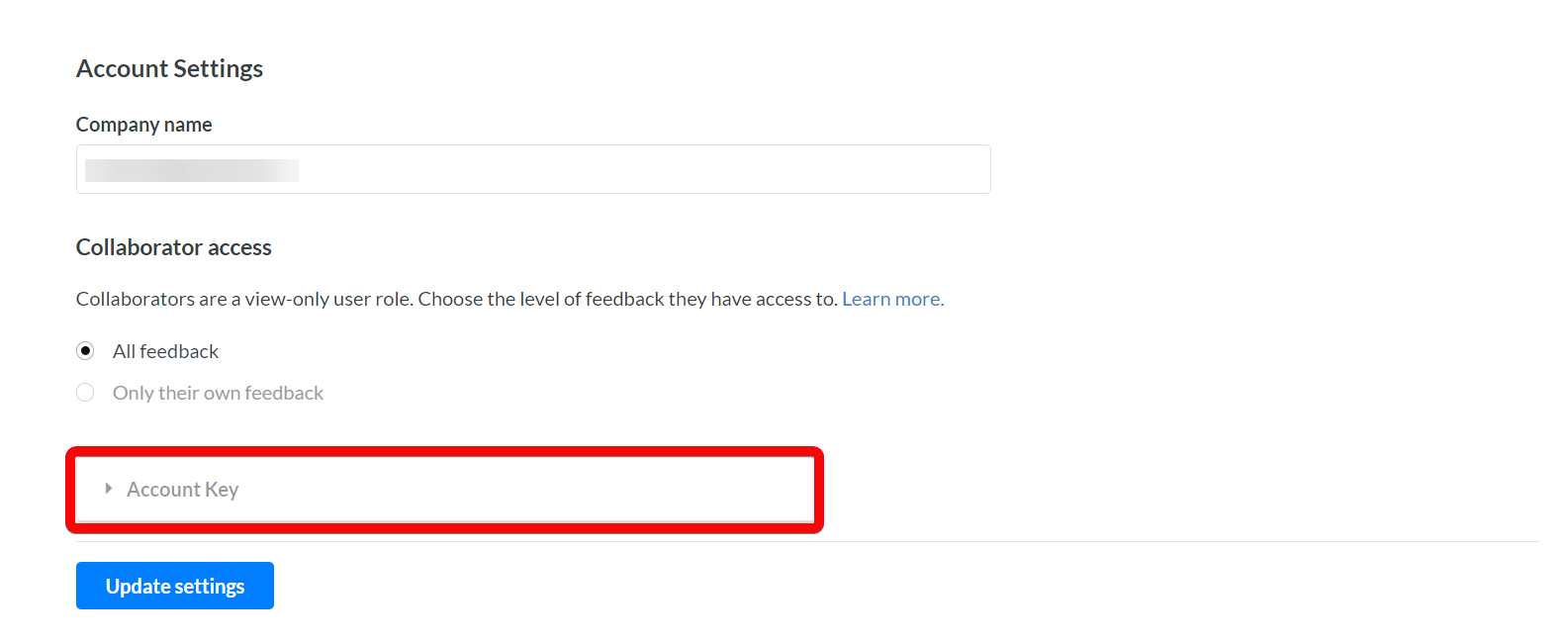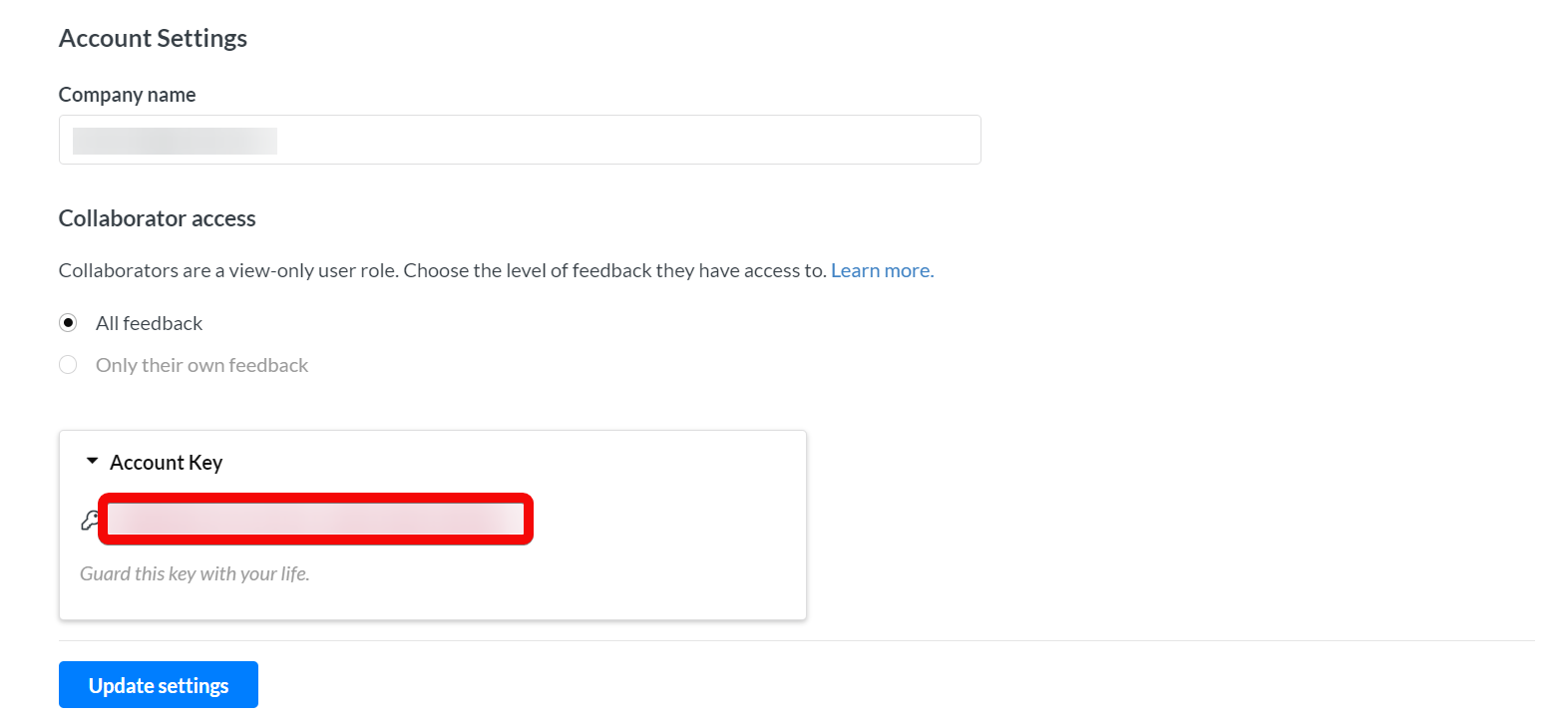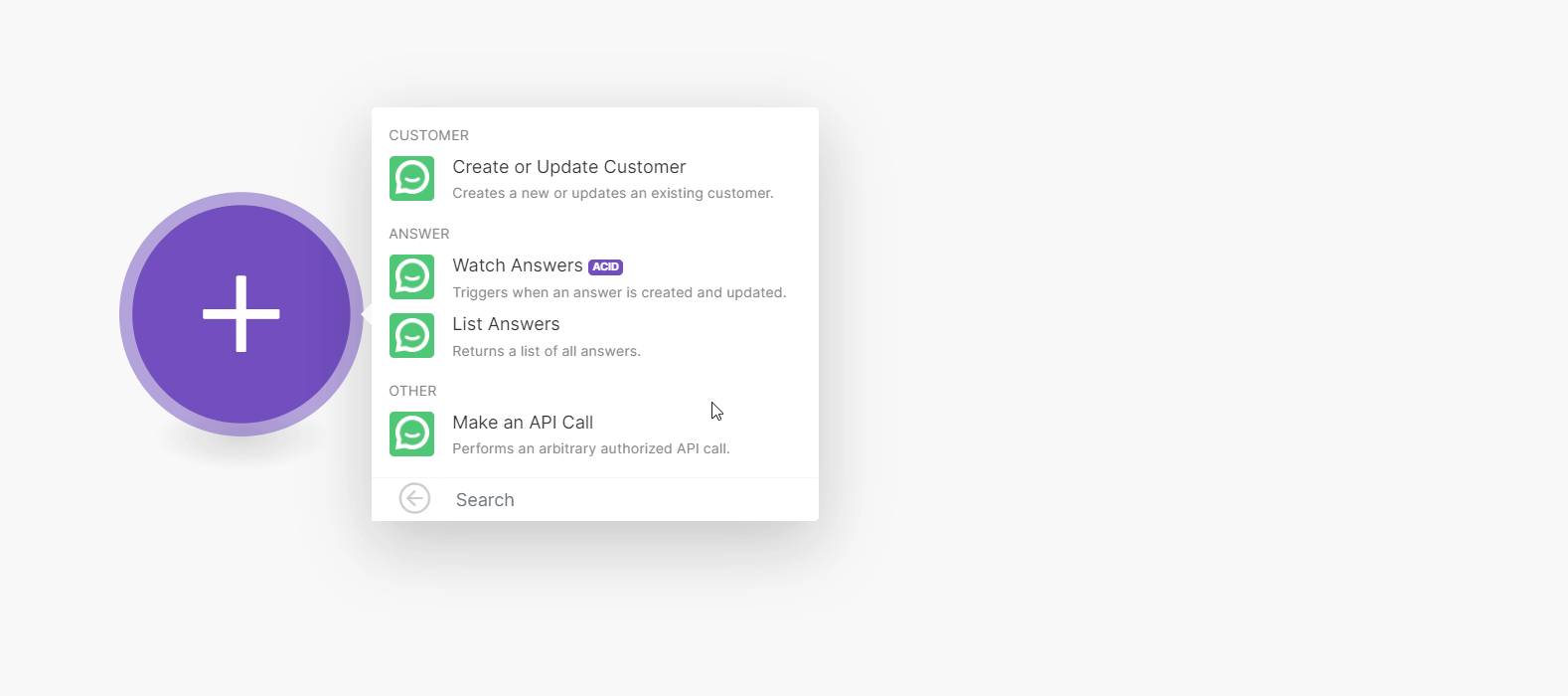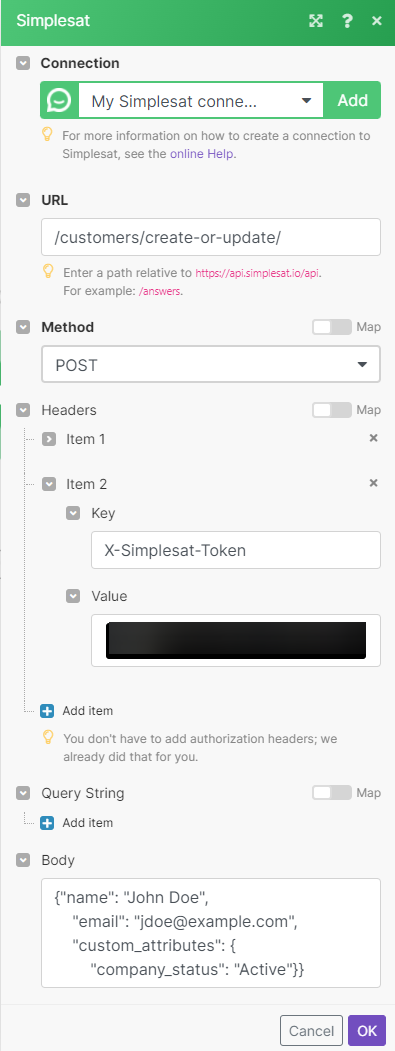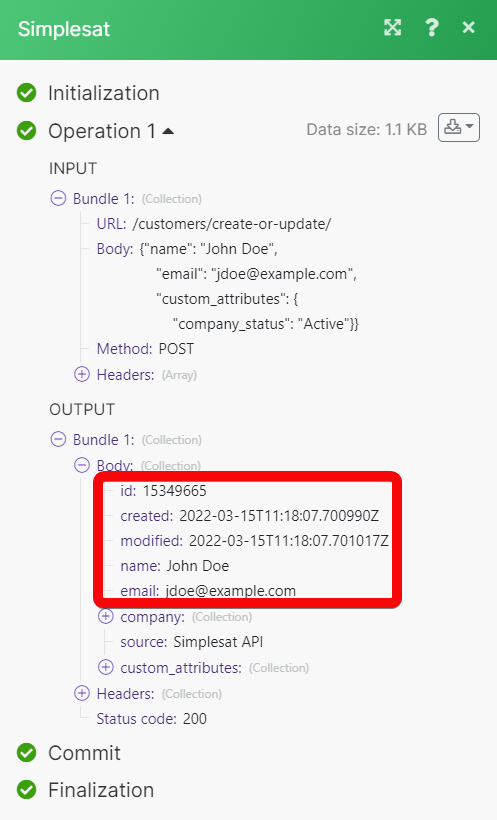| Active with remarks |
|---|
| This application needs additional settings. Please follow the documentation below to create your own connection. |
With the Simplesat modules in Boost.space Integrator you can:
-
create or update a customer
-
watch and list answers
To get started with Simplesat, create an account at Simplesat.
![[Note]](https://docs.boost.space/wp-content/themes/bsdocs/docs-parser/HTML/css/image/note.png) |
Note |
|---|---|
|
The module dialog fields that are displayed in bold (in the Boost.space Integrator scenario, not in this documentation article) are mandatory! |
To connect your Simplesat account to Boost.space Integrator you need to obtain the API Key from your Simplesat account and insert it in the Create a connection dialog in the Boost.space Integrator module.
-
Log in to your Simplesat account.
-
Click Admin > Account Settings.
-
Copy the Account Key to the clipboard.
-
Log in to your Boost.space Integrator account, add a module from the Simplesat app into an Boost.space Integrator scenario.
-
Click Add next to the Connection field.
-
In the Connection name field, enter a name for the connection.
-
In the API Key field, enter the details copied in step 3 and click Continue.
You have successfully connected Simplesat app with Boost.space Integrator and can now create scenarios.
You can create or update the customers.
Creates a new or updates an existing customer.
|
Connection |
|
|
|
Enter (map) the customer’s email address. |
|
Name |
Enter (map) the customer’s name. |
|
Company Name |
Enter (map) the customer’s company name. |
|
Custom Attributes |
You can include multiple custom attributes with each customer record to use as rules for your audience. For example, person type, company status, and user role. Simplesat checks whether the custom attribute exists:
|
You can create and run the following answer modules.
Triggers when an answer is created and updated.
You can call APIs using the Make an API Call module.
Performs an arbitrary authorized API call.
|
Connection |
||||
|
URL |
Enter a path relative to https://api.simplesat.io/api. For example: /answers.
|
|||
|
Method |
Select the HTTP method you want to use: GET to retrieve information for an entry. POST to create a new entry. PUT to update/replace an existing entry. PATCH to make a partial entry update. DELETE to delete an entry. |
|||
|
Headers |
Enter the desired request headers. You don’t need to add authorization headers; we’ve already added those for you. |
|||
|
Query String |
Enter the request query string. |
|||
|
Body |
Enter the body content for your API call. |
The following API call creates or updates the customer in your Simplesat account:
URL:
/customers/create-or-update/
Method:
POST
Headers:
Key: X-Simplesat-Token
Value: {{your access token}}
The result can be found in the module’s Output under Bundle > Body.
In our example, a new customer is created with the specified details:


